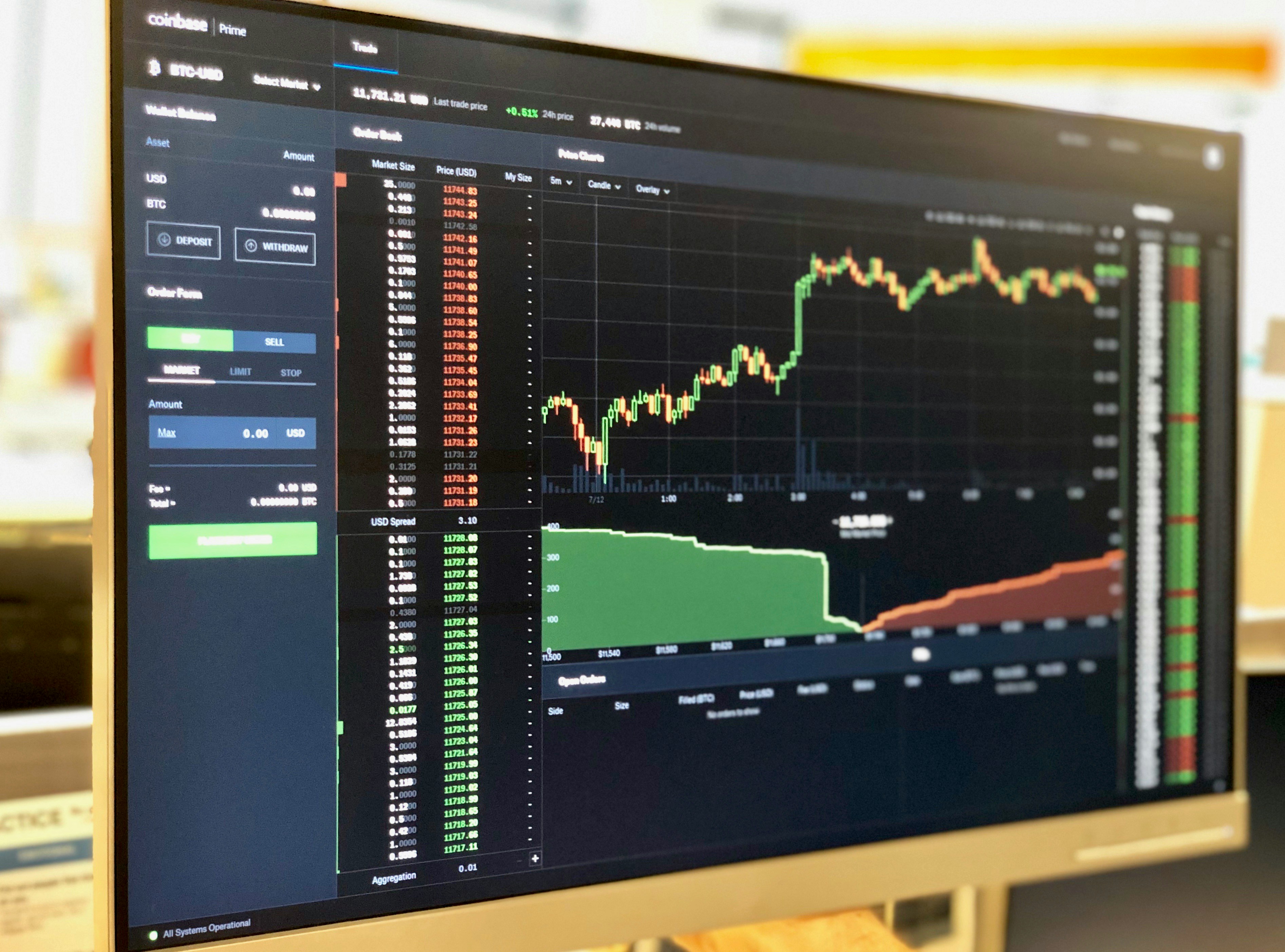
Introduction to Ethereum and Its Importance
Ethereum, created by Vitalik Buterin and launched in 2015, has emerged as a pivotal player in the cryptocurrency market, distinguishing itself from Bitcoin through its robust platform for developing decentralized applications (dApps). Unlike Bitcoin, which primarily serves as a digital currency, Ethereum’s foundational technology allows developers to build complex smart contracts. These immutable programs automatically execute transactions and agreements when specific conditions are met, eliminating the need for intermediaries.
The significance of Ethereum extends far beyond simple transactions. It plays a crucial role in the realm of decentralized finance (DeFi), a burgeoning sector that aims to reshape how financial services are accessed and utilized. DeFi projects built on the Ethereum blockchain enable users to borrow, lend, and trade assets without traditional banks, increasing accessibility and fostering financial independence. As DeFi continues to grow, Ethereum’s scalability and adaptability have become paramount topics within the cryptocurrency community.
Additionally, Ethereum has paved the way for the creation and proliferation of non-fungible tokens (NFTs). These unique digital assets are often associated with art, music, and gaming, allowing creators to tokenize their work and reach a global audience. The recent surge in NFT popularity has further solidified Ethereum’s position as a leader in innovation within the blockchain ecosystem.
As we delve into the nuanced Ethereum price prediction and analysis for April 21, 2025, understanding these foundational aspects of Ethereum is essential. The interplay of its technological advancements and growing application across various industries will significantly influence its price trajectory in the future. Consequently, analyzing these factors will provide insight into Ethereum’s potential movement and its response to market trends and external events.
Current Market Trends and Historical Price Movements
The analysis of Ethereum’s historical price movements reveals a wealth of information leading up to April 21, 2025. Since its inception in 2015, Ethereum has demonstrated remarkable volatility, influenced by various market dynamics and macroeconomic factors. Notably, major milestones, such as network upgrades and legislative changes, have often precipitated significant price changes, making historical context essential for understanding current trends.
In the months leading up to April 2025, Ethereum experienced a series of fluctuations, as seen in previous years. For instance, the integration of Ethereum 2.0 and advancements in scalability through solutions like layer-2 protocols had a substantial impact on investor sentiment and, consequently, the price of Ethereum. Moreover, the growing adoption of decentralized finance (DeFi) applications built on the Ethereum blockchain contributed to heightened demand and market activity. The correlation with Bitcoin, often regarded as a bellwether for the entire cryptocurrency market, has also played a crucial role in Ethereum’s price trajectory. Historical data suggest that periods of Bitcoin’s bullish performance often coincide with similar upward movements in Ethereum’s price, though the extent of these movements can vary significantly.
In understanding Ethereum’s performance against other cryptocurrencies, it became evident that while Ethereum positioned itself as a leading altcoin, it faced competition from emerging platforms purportedly offering superior features. Notably, alternative smart contract platforms challenged Ethereum’s market dominance, thus adding another layer of complexity to price evaluation. An analysis of past trends, such as prominent price rallies and subsequent corrections, will provide a foundational perspective for making informed ethereum price prediction and analysis for April 21, 2025.
Technical Analysis for Ethereum
Technical analysis plays a crucial role in forecasting the future movements of Ethereum’s price. By examining historical price data, traders can identify patterns and trends that are often indicative of potential future movements. One common method used in technical analysis is chart analysis, where various chart types, such as line charts, candlestick charts, and bar charts, help visualize price fluctuations over time.
In addition to chart analysis, it is essential to identify key support and resistance levels. Support levels are price points where buying interest is strong enough to prevent the price from falling further. Conversely, resistance levels are points where selling interest is sufficient to halt price increases. For Ethereum, identifying these levels can provide insight into potential entry or exit points for traders. If Ethereum approaches a known support level, there may be a buying opportunity, whereas nearing a resistance level could indicate a potential area for selling.
Common technical indicators, such as moving averages and the Relative Strength Index (RSI), also contribute to an informed ethereum price prediction and analysis for April 21, 2025. Moving averages, whether simple or exponential, can smooth out price data to highlight trends over specific periods, while the RSI measures the speed and change of price movements. An RSI value above 70 indicates that Ethereum may be overbought, while a value below 30 could suggest it is oversold.
Lastly, recognizing patterns such as head and shoulders or double tops and bottoms may influence future price movements significantly. Such patterns often precede reversals and offer valuable insights into the volatility of Ethereum’s trading behavior. By employing these technical analysis techniques, traders can enhance their understanding of Ethereum’s potential price trajectory leading up to April 2025.
Fundamental Factors Impacting Ethereum’s Price
The price of Ethereum, like many cryptocurrencies, is subject to various fundamental factors that can significantly influence its valuation. As we approach April 21, 2025, several key aspects warrant examination to understand potential price trajectories and fluctuations. One major influencing factor is the ongoing upgrades and developments within the Ethereum network. The transition to Ethereum 2.0, which aims to enhance scalability, security, and sustainability, could lead to increased user confidence and broader adoption. These enhancements may positively affect the ethereum price prediction landscape, attracting both individual and institutional investors.
Another critical factor is network adoption rates, which are indicative of a growing user base and increased transaction volumes. As more developers create decentralized applications (dApps) on the Ethereum blockchain, the demand for Ether (ETH) is likely to rise, contributing to potential price increases. Furthermore, partnerships with established companies and integrations into various industries could bolster the credibility and utility of Ethereum, thereby impacting its price favorably.
Regulatory impacts also play a crucial role in shaping the price of Ethereum. As governments around the world define their stance on cryptocurrencies, policies implemented can either promote growth or instill caution among investors. For instance, stringent regulations might dampen market sentiment, leading to price declines, while supportive frameworks could enhance market confidence, fostering price appreciation.
Lastly, macroeconomic factors, such as inflation rates, interest rates, and global economic conditions, can have an overarching effect on the cryptocurrency market sentiment. In a favorable economic environment, where risk appetite is higher, investors may gravitate towards assets like Ethereum, thus potentially driving up the ethereum price prediction.
Predictions from Analysts and Experts
As the cryptocurrency market continues to evolve, analysts and experts are providing their insights regarding the future price of Ethereum, specifically focusing on the date of April 21, 2025. A variety of predictions have emerged, reflecting diverse methodologies and expectations influenced by market trends, technological advancements, and regulatory developments.
One prominent analyst has expressed optimism regarding Ethereum’s prospects, citing the ongoing upgrades to the Ethereum 2.0 network as a key factor. They predict that the transition to a proof-of-stake model, along with the expansion of decentralized applications, could drive prices to levels exceeding $5,000. This prediction is supported by the belief that an increased adoption of decentralized finance (DeFi) platforms will enhance Ethereum’s utility, thereby positively impacting its price.
Conversely, some experts maintain a more cautious stance. They recognize potential challenges, such as regulatory scrutiny and the emergence of competing blockchain platforms that could threaten Ethereum’s market position. These analysts have forecasted a more conservative price range, estimating that prices may hover around $3,000 to $4,000 by April 2025, reflecting their concerns about potential market volatility and adoption rates.
Notably, there is a contingent of analysts advocating for a middle ground, suggesting that Ethereum’s price could reach around $4,500. They argue that factors such as the continued maturation of the DeFi space and institutional interest in cryptocurrencies will contribute to a steady appreciation in value, albeit at a moderated pace compared to the bullish predictions.
The wide spectrum of price predictions elucidates the uncertainty that characterizes the cryptocurrency landscape. While Ethereum price prediction and analysis for April 21, 2025 remains speculative, the amalgamation of expert insights highlights the importance of continuously monitoring market dynamics and investor sentiment to navigate the complexities of cryptocurrency valuation. As such, potential investors should consider these diverse forecasts in their decision-making processes.
Potential Risks and Challenges for Ethereum
The journey of Ethereum towards a potentially favorable price prediction by April 21, 2025, is fraught with several risks and challenges that may impede its growth trajectory. One significant concern is the technological vulnerabilities inherent in the Ethereum network. Despite ongoing development and upgrades, such as the transition to Ethereum 2.0, the platform still faces threats from bugs, hacks, and smart contract flaws. These vulnerabilities can undermine investor confidence, leading to adverse reactions in market pricing.
Additionally, competition from other blockchain platforms poses a substantial challenge for Ethereum. Rivals like Binance Smart Chain, Solana, and Cardano are not only vying for market share but are also continuously innovating. If these platforms offer more efficient solutions or better user experiences without the drawbacks seen in Ethereum, they could lure developers and investors away, potentially affecting Ethereum’s market position and price prediction negatively.
Moreover, regulatory hurdles are another critical factor that can impact Ethereum’s growth and price. Governments around the world are increasingly scrutinizing cryptocurrencies and their use in illicit activities. This heightened attention may lead to restrictive regulations that could obstruct Ethereum’s utilization in various industries. If regulatory measures become too stringent, they could stifle innovation, limit investor participation, and detract from the ecosystem’s growth.
Lastly, the blockchain market is inherently volatile. Price fluctuations can be influenced by a myriad of factors, including macroeconomic conditions, investor sentiment, and technological advancements within the space. Such volatility can deter potential investors, complicating Ethereum’s path towards a favorable price prediction. Overall, while Ethereum holds considerable promise, it must navigate these risks effectively to secure favorable outcomes by April 2025.
Market Sentiment and Community Influence
The price of Ethereum is significantly influenced by market sentiment, which reflects the collective attitudes and emotions of investors and traders regarding the cryptocurrency. As a decentralized platform, Ethereum thrives on community engagement and discourse, with social media playing an indispensable role in shaping opinions and expectations. Platforms such as Twitter, Reddit, and Telegram serve as breeding grounds for discussions regarding market trends, technological advancements, and any news surrounding Ethereum. The community’s perception can swiftly alter the dynamics of the market, impacting investor confidence and, therefore, the Ethereum price prediction for April 21, 2025.
Moreover, community involvement and feedback are crucial in guiding Ethereum’s development and strategic direction. High levels of engagement within the ecosystem can lead to the successful implementation of upgrades and enhancements, which, in turn, foster optimism among investors. Positive project developments, such as protocol upgrades or partnerships, not only pique the interest of the existing community but also attract new investors, contributing to upward price momentum. Conversely, negative news or criticism from influential community members can lead to adverse reactions, which may result in a decline in Ethereum’s value.
The news cycle also plays an essential role in shaping public perceptions. With rapid media coverage of crypto markets, Ethereum often finds itself at the forefront when significant events occur, whether they are regulatory changes, technological breakthroughs, or security incidents. Each of these elements can sway market sentiment, creating volatility in Ethereum’s price. As we approach April 2025, it becomes increasingly essential to monitor these factors closely, recognizing that the collective feelings and actions of the community and the market at large will play an integral part in the eventual outcome of the Ethereum price prediction and analysis.
Practical Strategies for Investors
Investing in cryptocurrencies, particularly Ethereum, demands a thoughtful approach, especially when considering ethereum price prediction and analysis for April 21, 2025. As the market remains volatile, investors must employ several practical strategies to ensure responsible and potentially lucrative investment outcomes.
First and foremost, risk management is critical. Investors should define their risk tolerance level and set clear guidelines for how much they are willing to invest in Ethereum and other cryptocurrencies. Consider utilizing stop-loss orders to limit potential losses and to automatically sell assets when they reach a predetermined price. This technique helps in navigating market fluctuations and protecting capital against unforeseen downturns.
Optimal timing for buying and selling is another vital strategy to consider. Market trends, historical data, and event-driven analyses can provide insight into suitable entry and exit points. For analysts looking ahead to ethereum price prediction and analysis for April 21, 2025, it would be prudent to monitor key indicators, including technological advancements within the Ethereum network, regulatory news, and overall market sentiment. Investors should remain proactive and adjust their strategies based on emerging trends and patterns.
Diversification plays a significant role as well. Relying solely on Ethereum can expose investors to unnecessary risk given the inherent volatility of the cryptocurrency market. Allocating funds across various cryptocurrencies, while also considering traditional investments, can create a balanced portfolio that mitigates risk. Decentralized finance (DeFi) platforms and tokens from other blockchains are valuable options to explore, which may complement an Ethereum-centered investment strategy.
In conclusion, by implementing effective risk management techniques, identifying optimal trading times, and diversifying investments, investors can better navigate the complexities of the crypto space. This strategic approach will empower investors to make informed decisions in light of ethereum price prediction and analysis for April 21, 2025, ultimately enhancing their potential returns in this evolving market.
Conclusion: The Future of Ethereum
As we conclude our analysis of the Ethereum price prediction and analysis for April 21, 2025, it is important to reflect on the key factors influencing the potential future of this cryptocurrency. Throughout the blog post, we have explored a variety of elements that contribute to Ethereum’s price trajectory, including market dynamics, technological advancements, regulatory developments, and broader economic conditions. Each of these factors will play a role in determining how Ethereum evolves in the coming years.
Firstly, technological enhancements, particularly the transition to Ethereum 2.0 and ongoing improvements in scalability and security, could play a crucial role in supporting the network’s value. As Ethereum continues to assert its dominance in the decentralized finance (DeFi) and non-fungible tokens (NFTs) sectors, demand for ETH may increase, influencing its price positively. The integration of new use cases and applications within the Ethereum ecosystem can also bolster its attractiveness to both institutional and retail investors.
Furthermore, it is essential to consider the potential regulatory landscape that may emerge by April 2025. As governments worldwide continue to evaluate how to approach cryptocurrencies, any significant regulatory shifts could impact investor sentiment and Ethereum’s market performance. Investors should stay informed about these developments to make educated decisions regarding their portfolios.
In preparing for varying market scenarios, a diversified investment strategy is advisable. Investors may want to develop a robust risk management plan that accounts for both bullish and bearish environments, ensuring they can navigate volatility effectively. By considering the nuances of the cryptocurrency market and staying apprised of trends in Ethereum price prediction, investors can enhance their readiness for future developments.















